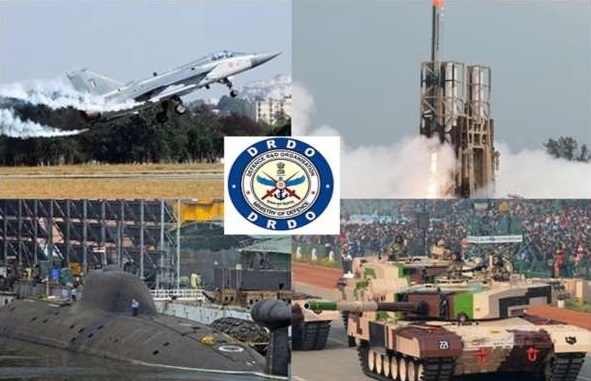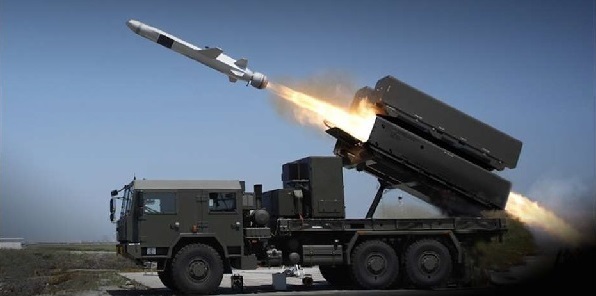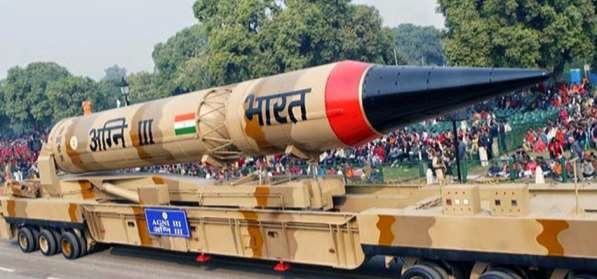
- Science & Technology Notes for UPSC IAS Prelims
- Home
- Science & Technology – Introduction
- Role of Science & Technology in Today’s Life
- Role of Science & Technology In India
- India: Development of Science & Technology
- Science & Technology Policy in India
- Information Technology
- Elements: Information Technology
- Cyber Crime & Cyber Security
- E-Infrastructure in India
- Artificial Intelligence
- Communication Technology
- Space Science & Technology
- Biotechnology
- Nanotechnology
- Ocean Technology
- Nuclear Technology
- Nuclear Energy in India
- Nuclear Energy - By Country
- India - Nuclear Program
- India - Defence Technology
- Space Exploration - Timeline
- Satellites Launched by India
- Indian Space Research Organisations
- Foreign Satellites Launched by India
- Government Space Agencies
- The DRDO
- Useful Resources
- Online Quiz
- Online Test
- Quick Guide
- Useful Resources
- Discussion
India Defence Technology
The responsibility of developing India’s defense technology is assigned to the DRDO, i.e., the Defence Research and Development Organization.
The Defence Research and Development Organization or DRDO was set up in 1958 and hence, it is the supreme body of researching, monitoring, regulating, and administering the India Defence Research and Development Program.

At present, DRDO is a network of more than 50 laboratories located in different cities of the country.
The DRDO specializes in the following fields −
- Aeronautical Engineering
- Electronics
- Armaments
- Engineering system
- Combat vehicles
- Missiles
- Advanced computing and simulation
- Life science
- Special materials
- Agriculture
- Training, etc.
Missile Technology
The development of missile technology in India started in the 1960s. Consider the following point relating to Missile Technology −
The first successful testing of space-cum-missile technology was the Rohini-75, which was tested in 1967.
The research and development program of developing indigenous missiles was called the Integrated Guided Missile Development Program’.
Types of Military Missiles
Based on target and launching position, the military missiles are classified as −
Air-to-Air Missile − This missile is carried by an aircraft and targets the enemy’s aircraft.
Surface-to-Air − Such missiles are fired at enemy’s aircraft from the ground.
Air-to-Surface − These missiles are fired at the enemy country’s ships, tankers, vehicles, bunkers, or military men from the aircraft.
Surface-to-Surface − Such missiles are fired at enemy grounds from our grounds.
Underwater − Such missiles target enemy locations in the water.

The Integrated Guided Missile Development Program
The idea of Integrated Guided Missile Development Program (IGMDP) was conceptualized by the former President and eminent scientist, Dr. APJ Abdul Kalam. The objective of this program was to enable India to attain self-sufficiency in the field of missile technology.
The missiles proposed under this program are −
Prithvi − It is a short-range surface-to-surface ballistic missile.
Trishul − It is a short-range surface-to-air missile.
Akash − It is a medium-range surface-to-air missile.
Nag − It is a third generation anti-tank missile.
Agni Series
Agni is a series of medium to intercontinental range ballistic missiles. Agni missiles are medium-to-long range, nuclear weapons capable surface to surface ballistic missile.

In the series of Agni missiles, the first (Agni-I) missile was developed under the Integrated Guided Missile Development Program in the 1980s and it was first tested in 1989.
The following table lists down the different Agni missiles with their features −
| Name | Type | Range | Status |
|---|---|---|---|
| Agni-I | Medium-range ballistic missile | 700 – 1,250 km | Operational |
| Agni-II | Medium-range ballistic missile | 2,000 – 3,000 km | Operational |
| Agni-III | Intermediate-range ballistic missile | 3,500 – 5,000 km | Operational |
| Agni-IV | Intermediate-range ballistic missile | 3,000 – 4,000 km | Operational |
| Agni-V | Intercontinental ballistic missile | 5,000 – 8,000 km | Testing |
| Agni-VI | Intercontinental ballistic missile | 8,000 – 10,000 km | Under development |